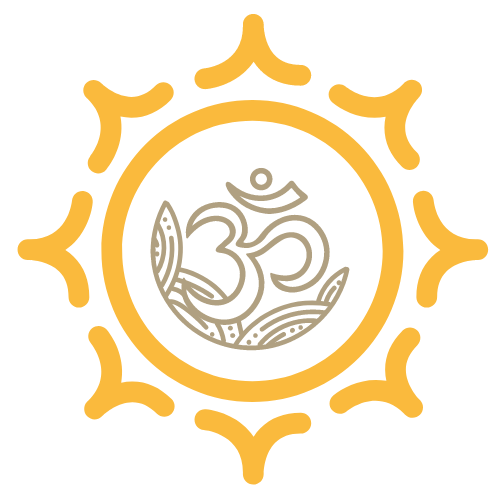Practical Yoga for Early Postpartum
In entering the postpartum period, you have just taken a momentous step in the transformation from maiden to mother! Having carried the power of creation in your body for about 10 moon cycles, you are journeying through the next phase of matrescence (mother-becoming or parent-becoming) as you enter the early postpartum period.
In the Vedic sciences of yoga and ayurveda, this period of time is considered to be very vata in quality. Vata is one of three major doshas or physiological states of being and is typified by a strong presence of the elements of air and space. Some of the characteristics of vata include cold, light, dry, moving, rough and spacious.
I invite you to consider how this transformation, and the resulting vata state, is manifesting itself in your reality right now. In yogic philosophy, the state of being at any point in time is considered to be the culmination of five sheaths or layers of our existence called the koshas. By understanding how your powerful transformation is affecting each layer, you can understand how best to support yourself throughout your entry into parenthood.
Annamaya kosha – the physical body
Take a moment to appreciate all the ways your body adapted to facilitate your pregnancy and the growth and nourishment of your baby.
Your body is truly amazing!
And another amazing thing is that, with time, you can support your amazingly adaptable body to find a new and magnificent adaptation into parenthood.
After you have birthed your baby, there is a period of time where there is a sudden emptiness or spaciousness inside where the baby was just recently residing. It is during this time that the vata element really takes hold, a time when the physical body can be quite vulnerable and needs a lot of rest, nourishment, warmth and support to recover from everything it has just been through.
The best way you can support your body in the first few weeks postpartum is to rest whenever possible. This is one of the reasons why postnatal (or parents and bubs) yoga classes don’t start until six weeks postpartum.
If you are someone who struggles to accept or even consider the idea of not moving much, consider that the rest you take now will allow you to more quickly return to the things you love doing when the time is right, and set you up to recover steadily, rather than experiencing setbacks later. But don’t worry, there are some simple ways you can begin to reconnect to your body.
Exercise – Proprioception
With such rapid changes in the body, it is normal to feel a bit disconnected physically. In order to reacquaint yourself with your body and connect with it in new ways, you can begin to gently re-establish proprioception (being able to sense where body parts are and how to engage them without having to look).
1. Lie perpendicular near a wall with your tailbone facing the wall so your legs can rest up the wall, heels into the wall.
2. Start from your toes and gently begin to point and flex them, inviting blood from your extremities back down towards your pelvis.
3. Follow down your legs, engaging and relaxing each set of muscles a few times gently as you go: the calves, the muscles that support your knees, your thighs, your buttocks.
4. Now come to an awareness of your pelvis and your pelvic floor. Bring your hands onto your belly and notice the rise and fall of your abdomen. On the inhale, as your abdomen rises, your pelvic floor is naturally lowering/softening. On the exhale, as your abdomen falls, your pelvic floor is naturally lifting/contracting.
5. Simply spend time here connecting with these movements and sensing into the sensation of these muscles of the abdomen and pelvic floor naturally being moved with the breath.
Do not worry if you find it hard to connect with these muscles at first. It can take a little time, patience and practice, but trust that you will find your body again before too long.
Always reach out to a women’s health physiotherapist if you have any concerns or feel that additional guidance would be helpful. And don’t forget to schedule your postpartum pelvic floor check from about the 6 weeks postpartum mark to really optimise your pelvic floor recovery.
Pranamaya kosha - life force energy, transported by the breath
No doubt your sleep patterns have been affected by now. As an unbroken sleep begins to feel like a distant memory, it can feel as if the life force is slowly being drained from you as well. It doesn’t help that your breathing muscles have to work out a new way of functioning again with the sudden change in space.
Encouraging your diaphragm to work more efficiently again will help move your organs back into place, gently engage your abdominals and naturally strengthen your pelvic floor. And by bringing more efficiency back into the breath, you can circulate that precious energy around your body more, both for yourself and for the energy you need to support your new little one.
Exercise – 360 degree breathing
1. Lie either on your back or on your side and allow the breath to steady to a natural pace.
2. Bring your hand/s to the side/s of your ribcage (one side if you are lying on your side, two sides if you are lying on your back). Notice if you feel any movement of the ribcage expanding outwards on the inhale and any movement back in on the exhale. Once you have observed for a few rounds of breath, invite the breath to move more into the sides of the ribcage with each inhale.
3. After a period of time, move your awareness to the movement of the ribcage at the back of your body. Notice if you feel any expansion outwards on the inhale and movement back in on the exhale. Once you have observed for a few rounds of breath, invite the breath to move more into the back of the ribcage with each inhale.
4. Bring it all together now. Place your hand/s on the front of your ribcage and notice the movement here in and out with the breath. Invite there to be less movement out in the front and direct more of the movement to the sides and back of the ribcage.
Spend as long as feels comfortable or suitable for your energy levels on this exercise. You can progress by bringing this awareness into other more upright postures such as sitting or standing.
Manomaya kosha – mind
Did you know that many changes occur within your brain during pregnancy and early postpartum? This brain plasticity is nature’s way of supporting your attachment to and ability to care for the new life you have welcomed into the world.
Hopefully this awareness allows you to feel a little more compassionate towards yourself, as you navigate the flood of hormones, the fog of decreased sleep and the uncertainty of stepping into this new role in your life. Knowing that you are hard-wired to care for your child can you allow yourself to be aware of the way your changed mental state feels, rather than feeling that you need to react to or reject it?
This whirlwind of changes is elevates the vata state in the body, and can lead to experiences of anxiety or overwhelm when out of check. At this time, easing the mind gently back towards a calmer state through simple grounding and anchoring practises can assist. The yogic practices of mantra and mudra are two simple yet powerful ways to assist.
Exercise – Mudra
A mudra is a symbolic gesture made with the body, most often with the hands/fingers (mudra means seal). By holding the body in specific ways, energy is directed to flow within the subtle body, supporting the desired state of the practitioner. We will practice vayu mudra which helps to balance the air element within the body.
1. Find a comfortable position to be, and gift yourself at least 5-10minutes of space and time.
2. Close your eyes and let your breath steady
3. Create vayu mudra with your hands, to help balance and calm the air element in your body:
a. Bring your hands to rest either on your thighs if sitting or at your sides if lying, with palms facing up.
b. Bend your index finger so that the tip of it touches the base of your thumb.
c. Wrap your thumb gently over your bent index finger and extend your other fingers long.
d. Ensure you have enough pressure to feel the mudra but not too much that it is uncomfortable to hold.
4. Hold vayu mudra for as long as feels comfortable or you have time for, allowing yourself to come back to the sensation of holding the mudra and/or the steadiness of your breath if the mind wanders.
When you reach 6 weeks postpartum, re-evaluate if you still feel you are in a vata state. If so, you can continue to practice with vayu mudra, but if you do not, please stop using the mudra at this time.
Vijnanamaya kosha – wisdom and intuition
Matrescence has an innate way of connecting women more deeply with their creative and intuitive abilities. If you didn’t believe in or rely upon your intuition before now, perhaps you have sensed it in the way you respond to your baby, in the way you are attuned to their communications with you and even in the way you hold and caress them.
Sometimes, it can be difficult to distinguish between what is your intuition, or gut instinct, and what is your busy mind. Modern life is a constant barrage of inputs from the outside world, so tuning in to our internal knowing can become quite difficult. Simple visualisation techniques can help to direct your attention inwards and give you confidence in deciphering whether it is your mind’s interpretation of external content or the inner mother of your heart speaking to you.
Exercise – Connecting to your intuition
1. Find a moment of quiet and calm when you first practice this exercise.
2. Imagine a light shining down upon you from above your head. You may like to imagine this is coming from ‘source/the universe/divine light’ or any other name you wish to use to describe a greater intelligence.
3. Allow yourself to feel a sense of light entering into your body through the crown of your head and travelling all the way down through your spine, out through your feet (or sitz bones if you are sitting) and into the ground, travelling deep down as if to the core of the earth.
4. With this beam of light connecting you from the sky to the earth, allow the light to now swirl around and within your body in an anti-clockwise direction, getting brighter and stronger as it fills up your whole body with light.
5. When you feel full of light, know that you are in your ‘inner power’ – tapping into your mother-wisdom. Bask in this for a moment.
6. Ask your question, or notice what first comes up for you. It may help to journal or free-draw if this assists you to connect to the information you are intuitively receiving.
7. When you are finished your reflection or enquiry, gather the light you have received from the sky and earth towards you and create a ball of light. Let this rest at your heart centre before you complete the practice.
Anandamaya kosha - bliss state
Have there been any moments, soon after birth or at whatever point in time the realisation landed for you that you are now a parent, that you experienced an almost indescribable awe at the miraculous act of creation you have just accomplished? Even if these were just fleeting memories, in those moments, what you are experiencing is sometimes described as ananda or ‘bliss’ in the yoga traditions.
The more opportunities you create for yourself to experience this state of being, the easier it becomes to attain it, just like exercising a physical muscle in your body. One way to prepare us for this is to encourage our heart to be open. When our heart is open, we are more connected to the feelings of joy and happiness, more connected to santosha (contentment).
Exercise – Heart Connection with Baby
Practise this exercise when you are having some quiet, calm time with your baby, such as when you are feeding or resting with them.
1. Ensure your baby is calm and you are holding them in a comfortable position for you both.
2. Bring awareness to your breath and allow it to soften and steady.
3. Tune into your baby’s breathing and notice its steadiness and regularity.
4. Now, come to an awareness that you and your baby are connected through your breathing and your heartbeats. Just as you were when baby was in the wombspace, so this connection can continue now.
5. With your next inhale, imagine you are breathing in love and then with the following exhale, breath that love to your baby.
6. With every additional breath, breathe in more of the endless love you have available for your baby and send it to them on the exhale.
7. Continue the practice as long as feels comfortable for you both.
What Next?
Wishing you all the very best on your parenthood journey.
If you are interested to explore deeper or to continue your postnatal yoga journey, there are a number of ways we can support you:
· Free online resources
· An online program for parenthood (Practical Yoga Philosophy for Parenthood), which dives much deeper into many of the concepts introduced here. (Use 30offclaire at checkout for $30 off)
· Our in-person, 8 week postnatal program and 1:1 yoga and pelvic health consultations
· Other upcoming prenatal and postnatal yoga events, workshops and retreats
Or feel free to reach out directly via our various contact options.





